Member Book Publications
AARG’s past and present members have been active publishers. A testament to this is the AIDS and Anthropology Bibliography located in the Resources section of this webpage. The bibliography contains 4,367 anthropological and HIV/AIDS-related citations dating from the 1970s up to 2008. This bibliography is a valuable resource for those working both inside and outside of academia. Additional references will be gladly received and periodically added. Please send these items to Susan Pietrzyk at spietrz1@binghamton.edu. Here AARG is pleased to highlight some of the recent book-length publications by current AARG members.
Edited by Peter Aggleton and Richard Parker ~ Routledge
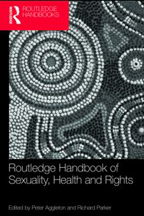 |
The last two decades have witnessed an explosion of research on sexuality as the social sciences have worked to find new ways of understanding a rapidly changing world. Growing concern for issues such as population, women's and men's reproductive health, and the HIV and AIDS pandemic, has since provided new legitimacy for work on sexuality, health and rights. Leading academics and practitioners are brought together to reflect on past, present and future approaches to understanding and promoting sexual health and rights. Find out more here. |
By Anne Bolin and Patricia Whelehan ~ Routledge/Taylor and Francis
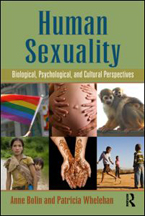 |
Utilizing viewpoints across cultural and national boundaries, and deftly weaving evolutionary and psychological perspectives, Bolin and Whelehan go beyond the traditional evolution and primatology to address cross-cultural and contemporary issues, as well as anthropological contributions and psycho-social perspectives. Taking into account the evolution of human anatomy, sexual behavior, attitudes, and beliefs, this far-reaching text goes beyond what is found in traditional books to present a wide diversity of beliefs, attitudes, and behaviors found globally. Fusing biological, socio-psychological, and cultural influences to offer new perspectives on understanding human sexuality, its development over millions of years of evolution, and how sexuality is embedded in specific socio-cultural contexts, this is the text for educators and students who wish to understand human sexuality in all of its richness and complexity. Find out more here. |
Edited by Leslie Butt and Richard Eves ~ University of Hawai'i Pres
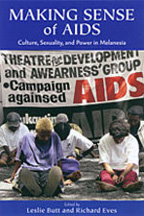 |
In Melanesia, rates of HIV infection are among the highest in the Pacific and increasing rapidly, with grave humanitarian, development, and political implications. There is a great need for social research on HIV/AIDS in the region to provide better insights into the sensitive issues surrounding HIV transmission. This collection, the first book on HIV and AIDS in the Pacific region, gathers together stunning and original accounts of the often surprising ways that people make sense of the AIDS epidemic in various parts of Melanesia. The volume addresses substantive issues concerning AIDS and contemporary sexualities, relations of power, and moralities—themes that provide a powerful backdrop for twenty-first century understandings of the tensions between sexuality, religion, and politics in many parts of the world. Find out more here. |
By Sonia Corrêa, Rosalind Petchesky, and Richard Parker ~ Routledge
 |
This new work surveys how rapid changes taking place at the start of the twenty-first century in social, cultural, political and economic domains impact on sexuality, health and human rights. The relationships between men, women and children are changing quickly, as are traditional family structures and gender norms. What were once viewed as private matters have become public, and an array of new social movements – transgender, intersex, sex worker, people living with HIV – have come into the open. Find out more here. |
Edited by Hansjörg Dilger and Ute Luig ~ Berghan Books
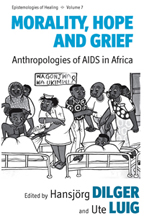 |
The HIV/AIDS epidemic in sub-Saharan Africa has been addressed and perceived predominantly through the broad perspectives of social and economic theories as well as public health and development discourses. This volume however, focuses on the micro-politics of illness, treatment and death in order to offer innovative insights into the complex processes that shape individual and community responses to AIDS. The contributions describe the dilemmas that families, communities and health professionals face and shed new light on the transformation of social and moral orders in African societies, which have been increasingly marginalised in the context of global modernity. Find out more here. |
By Helen Epstein ~ Picador Press
 |
The Invisible Cure is an account of Africa's AIDS epidemic from the inside--a revelatory dispatch from the intersection of village life, government intervention, and international aid. Helen Epstein left her job in the US in 1993 to move to Uganda, where she began work on a test vaccine for HIV. Once there, she met patients, doctors, politicians, and aid workers, and began exploring the problem of AIDS in Africa through the lenses of medicine, politics, economics, and sociology. Amid the catastrophic failure to reverse the epidemic, she discovered a village-based solution that could prove more effective than any network of government intervention and international aid, an intuitive response that calls into question many of the fundamental assumptions about the AIDS in Africa. Find out more here. |
Edited by Douglas A. Feldman ~ University of Florida Press
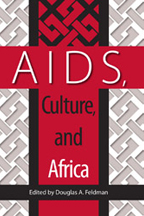 |
Too often, approaches to dealing with the problems posed by the spread of HIV have been one dimensional, with the assumption that what works in one place will work in another. Douglas Feldman has collected a group of essays representing a wide range of original ideas, methodologies, and suggestions that make a significant contribution to the field of AIDS research, both in Africa and beyond. AIDS, Culture, and Africa examines such key issues as HIV transmission, condom use, sexual patterns, male circumcision, political factors, gender, poverty, and behavioral change. Find out more here. |
By Douglas A. Feldman ~ LAP Lambert Academic Publishing
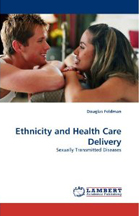 |
This pre-AIDS era ethnography and evaluation study of two sexually transmitted infection clinics on Long Island, New York is as relevant today as it was when presented as a doctoral dissertation back in 1981. The numerous case studies give a very human face to the crisis of STIs that was rapidly growing in the years leading up to the advent of AIDS. It is learned that attitudes toward the clinics, the doctors, and the nurses differ not just among whites, blacks, and Hispanics, but also among different white ethnic groups, as well. Most of the policy recommendations are as valid today, if not more so, as they were when they were first made. This is the first ethnography by an anthropologist of STI clinics in the United States, and it is destined to become a classic in this field. Find out more here. |
Edited by Douglas A. Feldman ~ University of Florida Press
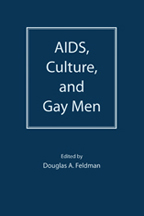 |
This highly readable volume of original essays explores the cultural dimensions of AIDS among men who have sex with men (MSM). The traditional emphasis in HIV/AIDS research within gay communities has focused on sexual behavior and psychological issues. Yet to better understand the social and cultural dimensions of the disease, and to halt the spread of HIV, it is essential to recognize and understand the culture of MSM. Cultural anthropologists, unquestionably, are in a unique position to achieve this understanding. Douglas Feldman has gathered a diverse group of experts to contribute to this collection, and the volume features a wealth of scholarly data unavailable elsewhere. Find out more here. |
By Angela Garcia ~ University of California Press
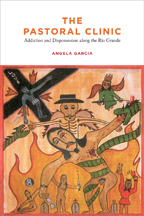 |
The Pastoral Clinic takes us on a penetrating journey into an iconic Western landscape--northern New Mexico's Espaola Valley, home to highest rate of heroin addiction and fatal overdoses in the United States. In a luminous narrative, Angela Garcia chronicles the lives of several Hispano addicts, introducing us to the intimate, physical, and institutional dependencies in which they are entangled. We discover how history pervades this region that has endured centuries of material and cultural dispossession, and we come to see its heroin problem as a contemporary expression of these conditions, as well as a manifestation of the human desire to be released from them. Lyrically evoking the Espaola Valley and its residents through conversations, encounters, and recollections, The Pastoral Clinic is at once a devastating portrait of addiction, a rich ethnography of place and an eloquent call for a new ethics of care. Find out more here. |
By Edward C. Green and Allison Herling Ruark ~ Left Coast Press
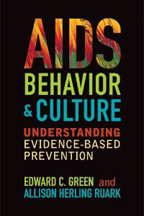 |
AIDS, Behavior, and Culture presents a bold challenge to the prevailing wisdom of “the global AIDS industry” and offers an alternative framework for understanding what works in HIV prevention. Arguing for a behavior-based approach, Green and Ruark make the case that the most effective programs are those that encourage fundamental behavioral changes such as faithfulness, avoidance of concurrent or overlapping sexual partners, delay of age of first sex, and complete recovery from drug addiction. Successful programs are locally based, low cost, low tech, innovative, and built on existing cultural structures. In contrast, they argue that anthropologists and public health practitioners focus on counseling, testing, condoms, and treatment, and impose their Western values, culture, and political ideologies in an attempt to “liberate” Third World people from sexual repression and homophobia. Find out more here. |
By Jennifer S. Hirsch, Holly Wardlow, Daniel Jordan Smith, Harriet M. Phinney, Shanti Parikh, and Constance A. Nathanson ~ Vanderbilt University Press
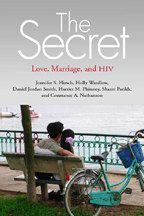 |
For many women around the world, their greatest risk of HIV infection comes from having sex with the very person with whom they are supposed to have sex: their spouse. The Secret situates marital HIV risk within a broader exploration of marital and extramarital sexuality in five diverse settings: Mexico, Nigeria, Uganda, Vietnam, and Papua New Guinea. In these settings, the authors write, men's extramarital sex, is an officially secret but actually widespread (and widely acknowledged) social practice, rather than something men do because their bodies demand it and women can't stop them. Find out more here. |
Sex Work and the City: The Social Geography of Health and Safety in Tijuana, Mexico (2009)
By Yasmina Katsulis ~ University of Texas Press |
A gateway at the U.S.-Mexico border, Tijuana is a complex urban center with a sizeable population of sex workers. An in-depth case study of the trade, Sex Work and the City is the first major ethnographic publication on contemporary prostitution in this locale, providing a detailed analysis of how sex workers' experiences and practices are shaped by policing and regulation. Contextualizing her research within the realm of occupational risk, Yasmina Katsulis examines the experiences of a diverse range of sex workers in the region and explores the implications of prostitution, particularly regarding the spheres of class hierarchies, public health, and other broad social effects. Find out more here. |
Access to Prevention of Mother-to-Child Transmission Program: Obstacles and Implications (2010)
By Thu Anh Nguyen, Pamela Wright, and Anita Hardon ~ LAP Lambert Academic Publishing
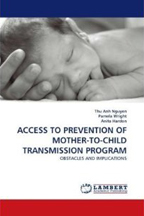 |
It was in 2000 that Nguyen, the author of the book, first met Pham Thi Hue, an HIV-infected mother who later became an Asian heroine. A long talk with Hue had made Nguyen a deep impression on the lives of HIV-infected women. She also found out that women have become more vulnerable to HIV infection, far from what she has seen from the statistics in Vietnam that drugs are the main source of HIV transmission and men are the major victims. All her efforts led her to this book, which presents the situation of HIV transmission from mothers to children in Vietnam, including the effect of health care system, culture with traditional norms and values, and personal difficulties of HIV-infected women. Medical intervention alone is insufficient to assist women in the comprehensive way accessing PMTCT services, given their complex needs in a society in which HIV is highly stigmatized and considered a "social evil". Find out more here. |
Caribbean Pleasure Industry: Tourism, Sexuality, and AIDS in the Dominican Republic (2007)
By Mark Padilla ~ University of Chicago Press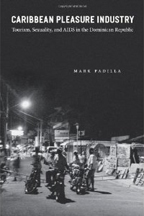 |
In recent years, the economy of the Caribbean has become almost completely dependent on international tourism. And today one of the chief ways that foreign visitors there seek pleasure is through prostitution. While much has been written on the female sex workers who service these tourists, Caribbean Pleasure Industry shifts the focus onto the men. Drawing on his groundbreaking ethnographic research in the Dominican Republic, Mark Padilla discovers a complex world where the global political and economic impact of tourism has led to shifting sexual identities, growing economic pressures, and new challenges for HIV prevention. Find out more here. |
Edited by Mark B. Padilla, Jennifer S. Hirsch, Miguel Muñoz-Laboy, Robert Sember, and Richard G. Parker ~ Vanderbilt University Press
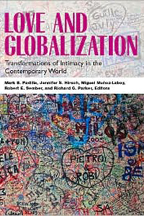 |
Discussions of globalization usually focus on political, economic, and technological transformations, but fail to recognize how we experience these processes in our daily lives, including our most intimate acts and practices. In this volume, anthropologists and sociologists draw on long-term ethnographic research on love, gender, and sexuality in a broad range of regions to discuss how global forces shape marriage, commercial sex, the political economy of intimacy, and lesbian and gay expressions of companionship. Find out more here. |
By Richard G. Parker ~ Vanderbilt University Press
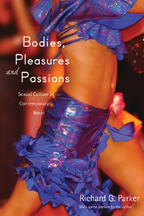 |
Originally published in the early 1990s, Bodies, Pleasures, and Passions quickly became a classic ethnographic study of the social, cultural and historical construction of sexuality and sexual diversity. Drawing on extensive field research and interviews, together with the analysis of historical and literary texts, anthropologist Richard Parker mapped out the multiple cultural systems that structure gender, sexuality, and erotic practices in Brazil, and helped to open up a new wave of social science research on sexuality. Using ethnographic methods focusing on sexual meanings as an alternative to traditional surveys of sexual behavior, Parker argues that sexual life can only be fully understood through an analysis of the cultural logics that shape experience. Find out more here. |
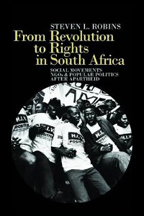 |
Critics of liberalism in Europe and North America argue that a stress on ‘rights talk’ and identity politics has led to fragmentation, individualisation and depoliticisation. But are these developments really signs of ‘the end of politics’? Robins argues for the continued importance of NGOs, social movements and other ‘civil society’ actors in creating new forms of citizenship and democracy, producing a complex, hybrid and ambiguous relationship between civil society and the state, where new negotiations around citizenship emerge. Find out more here. |
Introduction to Syndemics: A Critical Systems Approach to Public and Community Health (2009)
By Merrill Singer ~ John Wiley & Sons, Inc.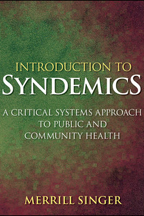 |
This book explains the growing field of syndemic theory and research, a framework for the analysis and prevention of disease interactions that addresses underlying social and environmental causes. This perspective complements single-issue prevention strategies, which can be effective for discrete problems, but often are mismatched to the goal of protecting the public's health in its widest sense. Find out more here. |
Edited by Merrill Singer and Hans Baer ~ Altamira Press
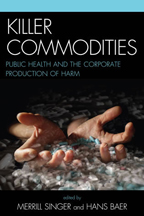 |
Killer Commodities enters the increasingly heated debate regarding consumer culture with a critical examination of the relationship between corporate production of goods for profit and for public health. This collection analyzes the nature and public health impact of a wide range of dangerous commercial products from around the world, and it addresses the question of how policies should be changed to better protect the public, workers, and the environment. Find out more here. |
By Robert J. Thornton ~ University of California Press
 |
This groundbreaking work, with its unique anthropological approach, sheds new light on a central conundrum surrounding AIDS in Africa. Robert J. Thornton explores why HIV prevalence fell during the 1990s in Uganda despite that country's having one of Africa's highest fertility rates, while during the same period HIV prevalence rose in South Africa, the country with Africa's lowest fertility rate. Thornton finds that culturally and socially determined differences in the structure of sexual networks—rather than changes in individual behavior—were responsible for these radical differences in HIV prevalence. Find out more here. |
By Patricia Whelehan ~ University of Florida Press
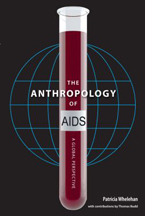 |
Until now, there has been no one text that discusses the norms, beliefs, and behaviors that affect how societies respond to HIV/AIDS around the world. The Anthropology of AIDS synthesizes data from anthropology, psychology, sociology, biology, and medicine, and incorporates the author's more than two decades of work as a medical anthropologist, HIV test counselor, and sex therapist. Designed for use in a range of college courses, this volume combines a solid introduction to the epidemiology of HIV and AIDS with a wealth of material exploring the cross-cultural societal impact of the disease. Find out more here. |

